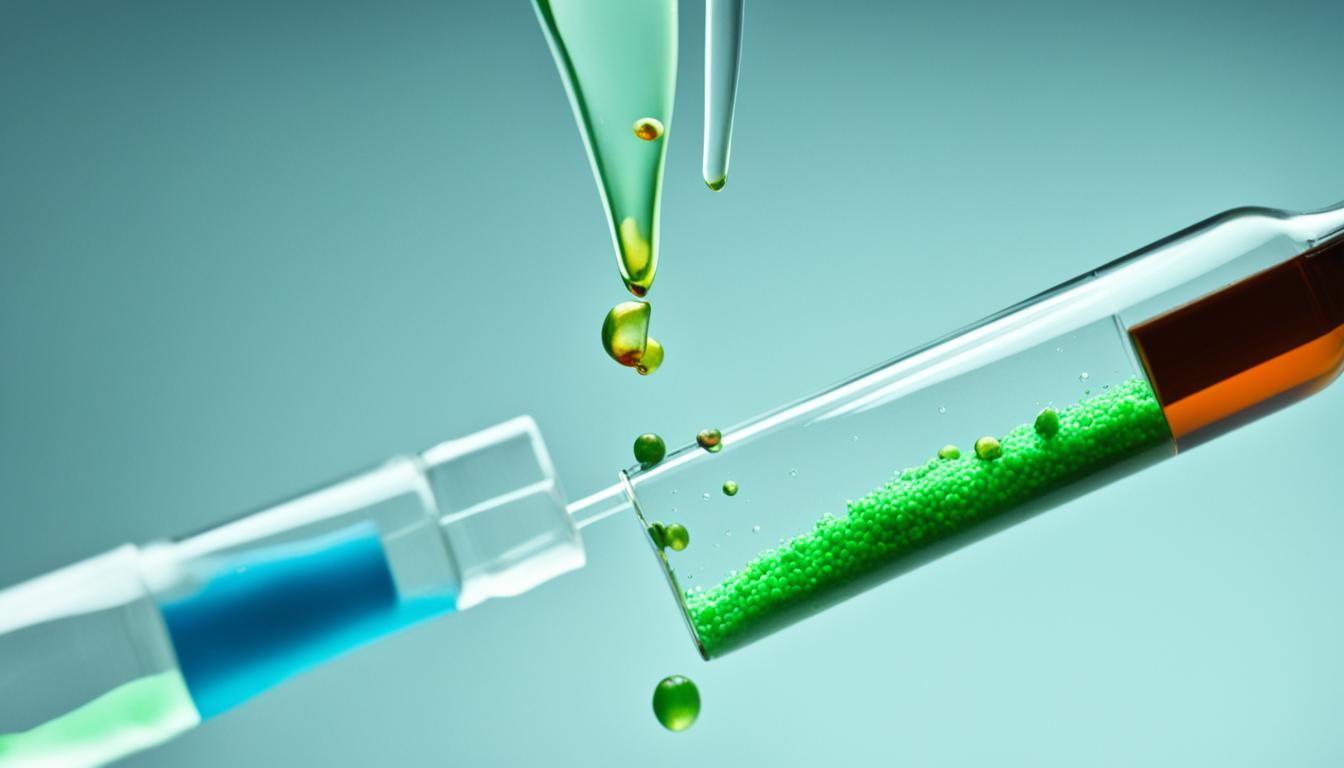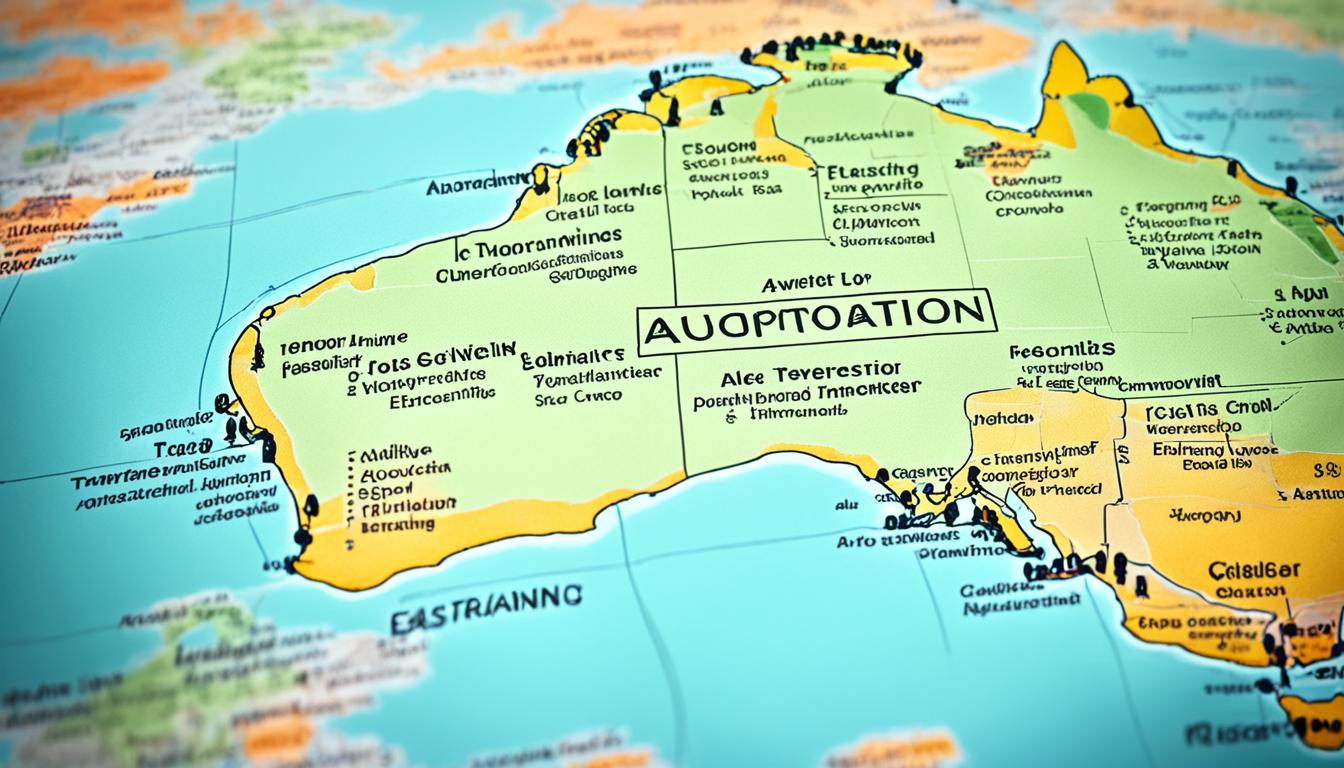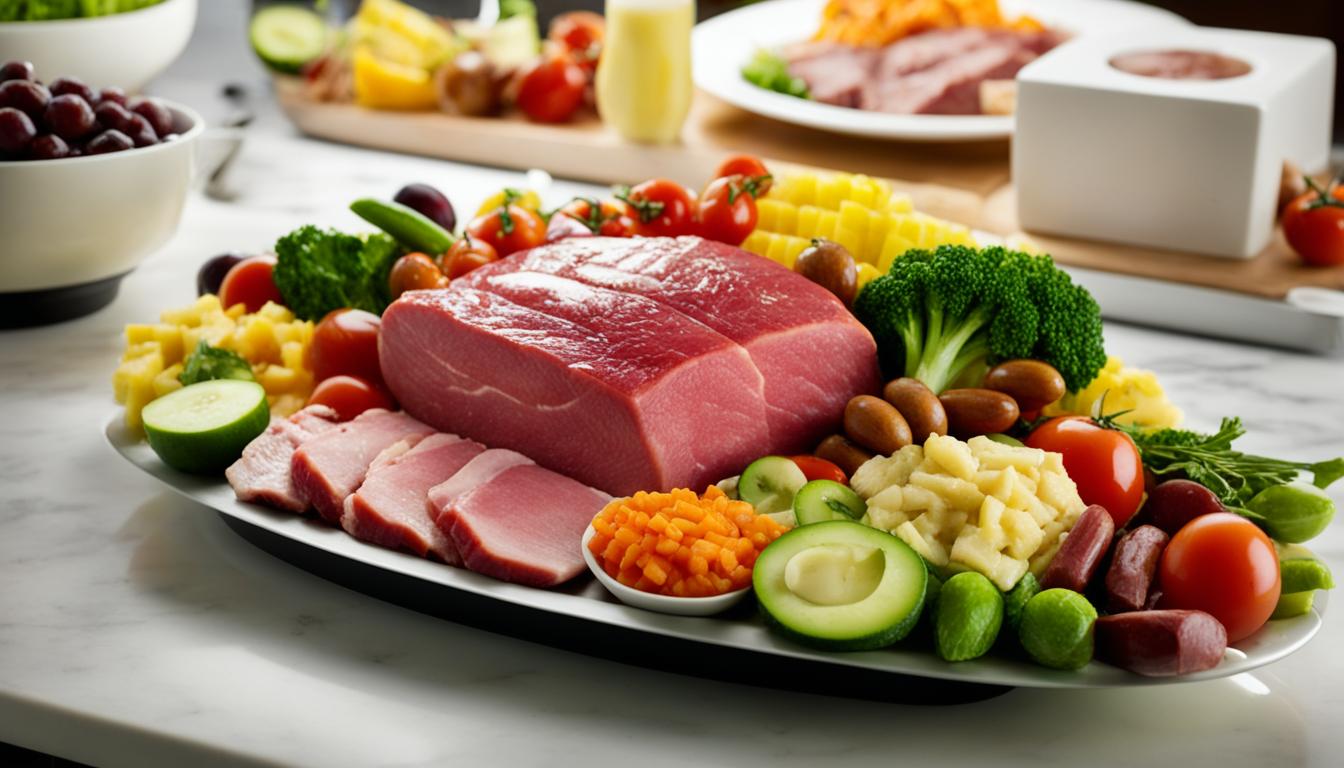
Welcome to our comprehensive guide on high-risk foods. In this article, we will explore what high-risk foods are, provide a definition for better understanding, and outline essential safety guidelines to protect your health. Proper handling and knowledge of high-risk foods are vital to prevent contamination and ensure food safety.
Key Takeaways:
- Understanding high-risk foods is crucial for maintaining food safety.
- High-risk foods are prone to contamination and require proper handling.
- Adhering to safety guidelines helps reduce the risk of foodborne illnesses.
- Identifying high-risk foods is essential to prevent contamination and ensure safety.
- Proper storage, cooking, personal hygiene, and cleaning practices are key to preventing high-risk food contamination.
Understanding High Risk Foods
In order to protect your health and maintain food safety, it is essential to have a clear understanding of high-risk foods. These are foods that are more susceptible to contamination, making proper handling and storage crucial. In this section, we will explore common high-risk foods that you should be aware of and provide you with a comprehensive list to help you identify them easily.
Common High Risk Foods:
- Raw or undercooked meats and poultry
- Raw or undercooked eggs
- Unpasteurized dairy products
- Raw sprouts
- Unwashed fruits and vegetables
- Shellfish
- Processed deli meats
- Pre-packaged salads and sandwiches
- Unpasteurized juices
- Unpasteurized cider
It is important to note that the list provided is not exhaustive, and there may be other foods that can also pose a high risk. Always exercise caution and follow proper food safety guidelines when handling any perishable foods.
It is crucial to handle high-risk foods properly to prevent foodborne illnesses.
By being aware of common high-risk foods and their potential for contamination, you can take the necessary steps to minimize the risk and ensure the safety of your meals. In the next section, we will discuss the dangers associated with high-risk foods and the importance of proper handling and identification.
The Dangers of High Risk Foods
Proper handling and identification of high-risk foods are crucial aspects of food safety. Failing to do so can lead to potential dangers and the risk of contamination. It is essential to understand the risks associated with mishandling these foods and the importance of accurate identification in order to prevent foodborne illnesses.
High risk food handling:
“Safe handling practices for high-risk foods are vital in order to protect yourself and others from harmful bacteria.”
High-risk foods are those that have a higher likelihood of bacterial growth due to their characteristics or processing methods. These foods provide an optimal environment for bacteria to multiply rapidly, increasing the risk of contamination and foodborne illnesses. By properly handling high-risk foods, you can minimize the potential dangers they pose.
Identifying high-risk foods:
“Being able to identify high-risk foods is key to implementing the necessary precautions to prevent contamination.”
Identifying high-risk foods is an essential step towards ensuring food safety. By understanding the characteristics and processing methods of these foods, you can effectively implement the appropriate precautions to prevent contamination. The table below provides examples of common high-risk foods.
| High-Risk Foods | Description |
|---|---|
| Raw poultry | Poultry products that have not been cooked |
| Raw seafood | Uncooked fish, shellfish, and crustaceans |
| Unpasteurized dairy | Dairy products that have not undergone pasteurization |
| Raw eggs | Uncooked eggs or dishes containing raw eggs |
| Meat products | Raw or undercooked meat and meat products |
By familiarizing yourself with these examples of high-risk foods, you can take the necessary precautions when handling and preparing them. It is important to note that this list is not exhaustive, and there may be other high-risk foods specific to certain cuisines or processing methods.
Accurate identification and proper handling of high-risk foods are essential for safeguarding against potential dangers. By following high-risk food safety guidelines, you can minimize the risk of contamination and protect the health of yourself and others.
Preventing High Risk Food Contamination
In order to protect your health and prevent high-risk food contamination, it is crucial to follow high risk food safety guidelines. By implementing practical tips and strategies, you can minimize the risk of harmful bacteria and ensure the safety of the food you consume.
Handle High Risk Foods with Care
When dealing with high-risk foods, such as raw poultry, seafood, or unpasteurized dairy products, it is essential to handle them with utmost care. Always remember to:
- Keep high-risk foods separate from other food items to prevent cross-contamination.
- Use separate cutting boards and utensils for different types of high-risk foods.
- Store high-risk foods at the correct temperatures to inhibit bacterial growth.
- Cook high-risk foods thoroughly to kill any harmful bacteria that may be present.
Practice Proper Hygiene
Personal hygiene plays a significant role in preventing high-risk food contamination. Follow these guidelines to maintain a clean and safe food preparation environment:
- Wash your hands thoroughly with soap and warm water before and after handling high-risk foods.
- Avoid touching your face, hair, or any other unclean surfaces while handling food.
- Wear clean and appropriate protective clothing, such as aprons and gloves, when handling high-risk foods.
- Keep your food preparation area clean and sanitized at all times.
Remember, proper hygiene practices can greatly reduce the risk of foodborne illnesses and ensure the safety of high-risk foods.
Follow Temperature Control Measures
High-risk foods are particularly susceptible to bacterial growth when exposed to temperature abuse. To prevent contamination, it is important to:
- Store high-risk foods at the correct temperatures to inhibit bacterial growth.
- Refrigerate perishable high-risk foods promptly to maintain their freshness and prevent bacterial growth.
- Use a food thermometer to ensure that high-risk foods are cooked to the appropriate internal temperature.
- Do not leave high-risk foods at room temperature for an extended period of time, especially in hot weather.
Training and Education
Proper training and education are vital in preventing high-risk food contamination. It is essential for food handlers to be well-informed about safe food handling practices and the potential risks associated with high-risk foods. Employers should provide adequate training to ensure that all staff members are knowledgeable and up to date with the latest food safety guidelines and regulations.
Examples of High Risk Foods
In this section, we will provide specific examples of high-risk foods to give you a clearer understanding of what constitutes a high-risk food. It is important to be aware of these common high-risk foods to ensure that you take the necessary precautions when handling and preparing them.
Common High Risk Foods
Below is a list of common high-risk foods that are susceptible to contamination:
| Food | Reason for High Risk Status |
|---|---|
| Raw poultry (chicken, turkey) | Potential presence of Salmonella and Campylobacter bacteria |
| Raw eggs | Potential presence of Salmonella bacteria |
| Raw seafood | Potential presence of Vibrio bacteria |
| Unpasteurized milk and cheese | Potential presence of E. coli and Listeria bacteria |
| Raw sprouts | Potential presence of E. coli and Salmonella bacteria |
It is crucial to handle and prepare these high-risk foods with caution to prevent foodborne illnesses. By understanding the specific risks associated with each food, you can take appropriate measures to minimize contamination and protect your health.
“Proper handling and preparation of high-risk foods are essential to prevent foodborne illnesses.”
Keep in mind that this list is not exhaustive, and there are other foods that may also carry a higher risk of contamination. It is important to stay informed and updated on food safety guidelines to ensure the safe handling of all your meals.
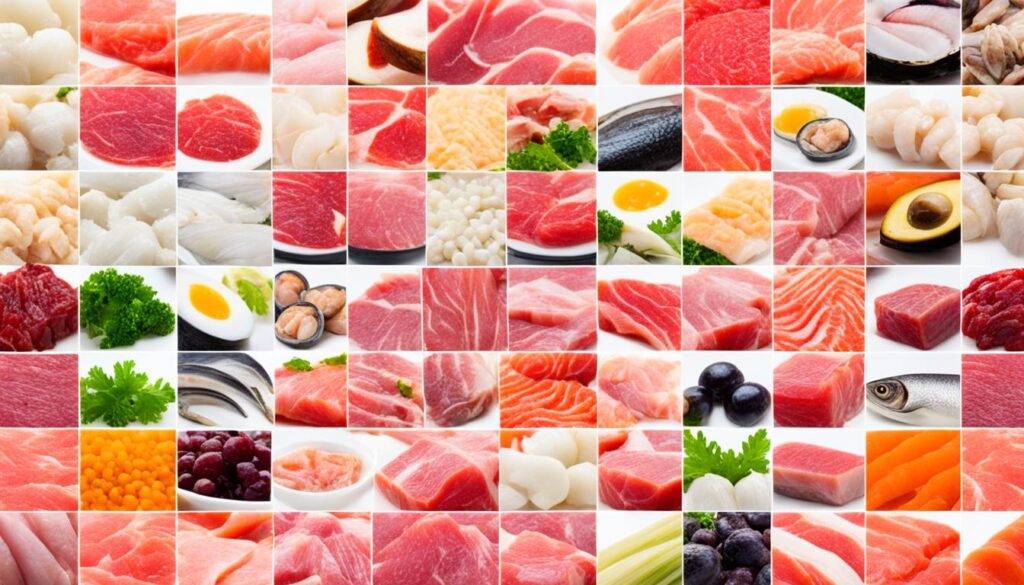
Remember, knowledge is power when it comes to food safety. Stay vigilant and take the necessary precautions to protect yourself and your loved ones from potential foodborne illnesses.
Proper Storage of High Risk Foods
When it comes to high-risk foods, proper storage is paramount in maintaining their safety and minimizing the risk of contamination. By following the high-risk food handling guidelines, you can ensure that your food remains fresh, free from harmful bacteria, and safe for consumption.
Here are some essential guidelines to help you store high-risk foods safely:
- Temperature control: Keep high-risk foods refrigerated at or below 41°F (5°C) to prevent the growth of bacteria. This includes perishable items like meat, poultry, seafood, eggs, and dairy products. Maintain your refrigerator at the appropriate temperature to preserve the freshness and quality of these foods.
- Separation and containment: Store high-risk foods separately to prevent cross-contamination. Keep raw meats and seafood separate from other ready-to-eat foods, using separate containers or sealing them in individual bags. This reduces the chances of bacteria from raw foods spreading to other items.
- Proper packaging: Seal high-risk foods tightly in moisture-proof containers or wrap them securely to prevent exposure to air and potential contamination. Use appropriate packaging materials such as plastic wrap, resealable bags, or airtight containers to maintain their freshness and minimize the risk of bacterial growth.
- Date labeling: Label high-risk foods with the date of storage to ensure that you can track their freshness. This practice helps to identify when an item should be consumed or discarded, reducing the risk of consuming spoiled or expired foods.
- First-in, first-out (FIFO) method: When storing high-risk foods, implement the FIFO method by placing newly purchased items behind existing ones. This ensures that older items are used first, reducing the chances of products expiring or becoming unsafe for consumption.
Remember, proper storage plays a crucial role in maintaining the quality and safety of high-risk foods. By adhering to these guidelines, you can protect yourself and others from potential foodborne illnesses.
“Proper storage of high-risk foods is essential in preventing foodborne illnesses. Follow these guidelines to ensure food safety and protect your health.”
| High Risk Foods | Storage Guidelines |
|---|---|
| Raw meat and poultry | Keep refrigerated at or below 41°F (5°C). Store separately from other foods to avoid cross-contamination. |
| Seafood | Store in the refrigerator at or below 41°F (5°C) in a sealed container or wrapped securely. Use within the recommended time frames. |
| Dairy products | Keep refrigerated at or below 41°F (5°C) and ensure proper sealing of containers to maintain freshness. |
| Eggs | Store in the refrigerator at or below 41°F (5°C) in their original carton to maintain quality and prevent cross-contamination. |
Cooking High Risk Foods
When it comes to cooking high-risk foods, following proper guidelines and techniques is crucial to ensure the safety of your meals. High-risk foods require extra attention to minimize the risk of harmful bacteria and contamination. By adopting safe cooking practices, you can protect yourself and your loved ones from potential foodborne illnesses.
Proper Cooking Techniques
Properly cooking high-risk foods is essential in eliminating harmful bacteria and ensuring food safety. Here are some guidelines to follow:
- Cook thoroughly: Ensure that high-risk foods are cooked all the way through to the recommended internal temperature. This will help kill any harmful bacteria that may be present.
- Use a food thermometer: Invest in a reliable food thermometer to accurately measure the internal temperature of cooked foods. Refer to the recommended temperature guidelines for different types of high-risk foods.
- Avoid cross-contamination: Use separate cutting boards and utensils for different types of foods, especially when handling raw and cooked high-risk foods. This helps prevent cross-contamination and the spread of bacteria.
- Practice good food hygiene: Wash your hands thoroughly before and after handling high-risk foods. Clean utensils, surfaces, and equipment regularly to maintain a clean cooking environment.
Safe Cooking Temperatures for High Risk Foods
| Food | Safe Minimum Internal Temperature |
|---|---|
| Poultry (including ground poultry) | 165°F (74°C) |
| Ground meats (excluding poultry) | 160°F (71°C) |
| Pork, veal, and lamb | 145°F (63°C) |
| Steaks, roasts, and fish | 145°F (63°C) |
Remember that these are general guidelines, and specific cooking times and temperatures may vary depending on the high-risk food. Always refer to reliable sources or consult a food safety expert for accurate recommendations.
Properly cooking high-risk foods is essential in eliminating harmful bacteria and ensuring food safety.
By following these high-risk food handling and safety guidelines, you can minimize the risk of foodborne illnesses associated with high-risk foods. It is crucial to maintain a clean and sanitary cooking environment, practice proper cooking techniques, and cook high-risk foods to the recommended internal temperatures. Prioritizing food safety not only protects your health but also allows you to fully enjoy the deliciousness of your meals without any worries.
The Role of Personal Hygiene
When it comes to handling high-risk foods, maintaining proper personal hygiene is of utmost importance. Practicing good hygiene habits can significantly reduce the risk of contamination and ensure the safety of the food you handle. Here are some essential tips to follow:
1. Handwashing
Always wash your hands thoroughly with soap and warm water before and after handling high-risk foods. This simple yet effective practice helps remove dirt, bacteria, and other harmful substances from your hands, preventing their transfer to the food. Remember to scrub your hands for at least 20 seconds, including the back of your hands, between your fingers, and under your nails. Dry your hands with a clean towel or air dryer.
2. Wearing Appropriate Protective Clothing
Wearing the right protective clothing, such as gloves, hairnets, or beard covers, is crucial when handling high-risk foods. These protective measures act as barriers, preventing any physical contact or hair from falling into the food. Make sure to use disposable gloves and change them regularly to avoid cross-contamination.
3. Maintaining a Clean Food Preparation Area
Keep your food preparation area clean and sanitized at all times. Regularly clean and disinfect countertops, cutting boards, utensils, and other surfaces that come into contact with high-risk foods. Use separate cutting boards and utensils for raw and cooked foods to minimize the risk of cross-contamination.
Remember, clean hands, protective clothing, and a sanitized food preparation area are the pillars of personal hygiene in high-risk food handling.
By following these personal hygiene practices, you can significantly reduce the risk of contamination and promote the safety of the high-risk foods you handle.
Image:
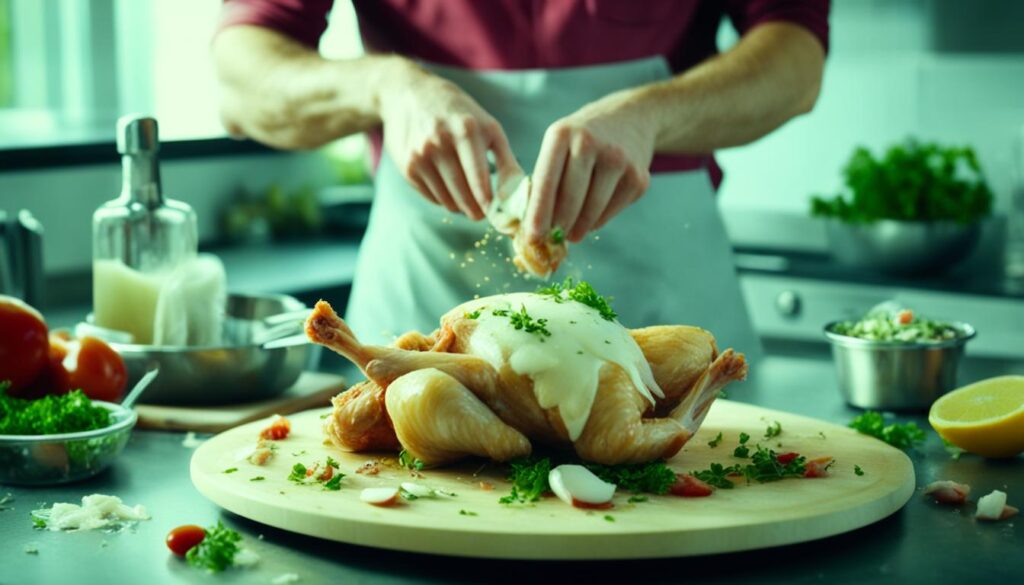
Cross-Contamination Prevention
In high-risk food handling, preventing cross-contamination is of utmost importance. Cross-contamination occurs when harmful bacteria or other contaminants from one food item are transferred to another. This can lead to foodborne illnesses and pose serious health risks. To ensure the safety of your meals and minimize the risk of contamination, it is crucial to follow high-risk food safety guidelines and implement practical strategies in your kitchen or food preparation environment.
Separate Raw and Cooked Foods
One effective way to prevent cross-contamination is to keep raw and cooked foods separate from each other. This includes using separate cutting boards, utensils, and containers for raw and cooked foods. By maintaining this separation, you can reduce the risk of harmful bacteria from raw foods contaminating cooked foods.
Proper Cleaning and Sanitization
Regularly cleaning and sanitizing all surfaces, utensils, and equipment is essential in preventing cross-contamination. Use hot, soapy water and sanitizing solutions to ensure thorough cleaning. Pay special attention to areas that come into contact with high-risk foods, such as cutting boards, countertops, and knives.
Practice Good Personal Hygiene
Your personal hygiene plays a crucial role in preventing cross-contamination. Wash your hands thoroughly with soap and warm water before and after handling high-risk foods. Avoid touching your face, hair, or any other surfaces while preparing food. Wearing clean and appropriate protective clothing, such as aprons and gloves, can also help maintain a hygienic environment.
Tip: Always remember to wash your hands for at least 20 seconds using soap and warm water.
Store Foods Properly
Proper storage is key in preventing cross-contamination. Keep raw meats, poultry, and seafood separately in sealed containers in the refrigerator to prevent their juices from dripping onto other foods. Store high-risk foods away from low-risk foods to avoid any contamination.
High-Risk Food Handling Guidelines for Cross-Contamination Prevention
| Guidelines | Description |
|---|---|
| Separate raw and cooked foods | Use separate utensils, cutting boards, and containers to prevent contamination between raw and cooked foods. |
| Clean and sanitize surfaces | Regularly clean and sanitize all surfaces, utensils, and equipment that come into contact with high-risk foods. |
| Practice good personal hygiene | Wash your hands thoroughly before and after handling high-risk foods and avoid touching your face or hair while preparing food. |
| Store foods properly | Keep high-risk foods separated from other foods and store them in sealed containers in the refrigerator. |
By following these high-risk food safety guidelines and implementing proper prevention strategies, you can significantly reduce the risk of cross-contamination and ensure the safety of your meals. Your diligence in handling high-risk foods will lead to a healthier and safer dining experience.
Proper Cleaning and Sanitization
Ensuring proper cleaning and sanitization practices is crucial when it comes to handling high-risk foods. This helps maintain a safe environment and prevents the risk of contamination. By following the high-risk food safety guidelines, you can protect yourself and others from foodborne illnesses. Here are some essential tips to keep in mind:
Cleaning Utensils
It’s important to clean utensils thoroughly before and after each use. Use hot, soapy water and a scrub brush to remove any food residue. Pay special attention to utensils that come into direct contact with high-risk foods, such as cutting boards and knives.
Cleaning Equipment
Regularly clean and sanitize all equipment used in food preparation, such as mixers, blenders, and slicers. Follow the manufacturer’s instructions for cleaning and disinfecting these appliances. This helps eliminate any potential bacteria or contaminants that may be lingering on the surfaces.
Sanitizing Surfaces
High-touch surfaces in your kitchen or food preparation area, including countertops and workstations, should be regularly sanitized. Use an appropriate sanitizer or a solution of bleach and water to disinfect these surfaces. Pay extra attention to areas where high-risk foods are handled.
Personal Protective Equipment (PPE)
Wearing proper PPE, such as gloves and aprons, can further reduce the risk of cross-contamination. Ensure that you have a sufficient supply of clean gloves and replace them as needed. Dispose of used gloves properly after handling high-risk foods to prevent the spread of bacteria.
Regular Audits and Inspections
Implementing regular audits and inspections is essential to ensure that cleaning and sanitization protocols are being followed consistently. Designate a responsible person to monitor and document these activities. This helps maintain accountability and ensures that high standards of cleanliness are upheld.
By following these proper cleaning and sanitization practices, you can create a safe environment for handling high-risk foods and protect the health and well-being of yourself and those you serve.
High Risk Foods in Food Service and Hospitality
In food service and hospitality settings, the handling and serving of high-risk foods require utmost attention to ensure the safety and well-being of customers. Failure to follow proper high risk food handling protocols can lead to foodborne illnesses, legal liabilities, and damage to a business’s reputation.
When it comes to high-risk foods, it is crucial for establishments to adhere to high risk food safety guidelines to minimize the risk of contamination. These guidelines encompass various aspects such as storage, cooking, personal hygiene, and cross-contamination prevention.
Storage of High Risk Foods
Proper storage is essential for maintaining the quality and safety of high-risk foods. Following these guidelines can help prevent bacterial growth and cross-contamination:
- Store high-risk foods at appropriate temperatures to inhibit the growth of harmful bacteria.
- Ensure proper separation between raw and cooked foods to prevent cross-contamination.
- Regularly check and monitor storage areas for any signs of pest infestation.
Cooking High Risk Foods
The safe cooking of high-risk foods is crucial to eliminate any harmful bacteria that may be present. Adhere to these guidelines to ensure thorough cooking:
- Cook high-risk foods at recommended temperatures to kill bacteria and pathogens.
- Use separate cutting boards and utensils for raw and cooked foods to prevent cross-contamination.
- Regularly calibrate and maintain cooking equipment to ensure accurate temperatures.
Personal Hygiene
The role of personal hygiene cannot be overstated when handling high-risk foods. Following these practices is essential to prevent the spread of bacteria:
- Thoroughly wash hands with soap and warm water before and after handling high-risk foods.
- Wear appropriate protective clothing, such as gloves and hairnets, to prevent contamination.
- Maintain a clean and sanitized work area to minimize the risk of bacterial growth.
Cross-Contamination Prevention
Preventing cross-contamination is crucial in the food service and hospitality industry. Adhere to these guidelines to minimize the risk:
- Ensure proper separation of raw and cooked foods in storage, preparation, and serving areas.
- Use separate cutting boards and utensils for different food items to prevent cross-contamination.
- Regularly clean and sanitize surfaces and equipment to eliminate any bacteria or allergens.
By diligently following high risk food handling guidelines, establishments in the food service and hospitality industry can ensure the safety of their customers, protect their reputation, and maintain compliance with regulatory standards.
| Food Category | Examples |
|---|---|
| Dairy Products | Raw or unpasteurized milk and cheese |
| Meat and Poultry | Raw or undercooked chicken, ground beef, and pork |
| Seafood | Raw or undercooked fish, shellfish, and sushi |
| Processed Foods | Delicatessen meats, hot dogs, and canned goods |
| Raw Produce | Unwashed fruits and vegetables |
Regulatory Standards for High Risk Foods
When it comes to high-risk foods, regulatory standards play a crucial role in ensuring food safety and protecting consumer health. Government agencies and food safety organizations are responsible for establishing guidelines and regulations that address the proper handling and management of high-risk foods.
These regulatory standards provide essential guidelines for businesses and individuals involved in the production, distribution, and preparation of high-risk foods. By following these guidelines, you can effectively minimize the risks associated with high-risk food handling and ensure the safety of your customers or yourself.
Government agencies, such as the U.S. Food and Drug Administration (FDA) and the United States Department of Agriculture (USDA), develop and enforce regulations that pertain to high-risk foods. They work in collaboration with food safety organizations and industry experts to establish standards that are backed by scientific research and industry best practices.
These regulatory standards focus on various aspects of high-risk food safety, including proper storage, cooking temperatures, hygiene practices, cross-contamination prevention, and cleaning and sanitation procedures. They provide clear guidelines and recommendations to help businesses and individuals maintain a high level of food safety and prevent foodborne illnesses.
It is essential for food establishments, such as restaurants, hotels, and catering services, to comply with these regulatory standards to ensure their operations adhere to the highest food safety standards. This not only protects the health of their customers but also helps them maintain a positive reputation and avoid legal implications.
Individuals handling high-risk foods at home can also benefit from these regulatory standards. By understanding and following the guidelines, you can minimize the risks associated with high-risk foods and protect the health and well-being of yourself and your loved ones.
It is important to stay informed about the latest updates and changes in high-risk food safety guidelines. Regularly reviewing and implementing these guidelines will contribute significantly to maintaining food safety standards and preventing foodborne illnesses.
Key Takeaways:
- Regulatory standards and guidelines specific to high-risk foods ensure food safety and protect consumer health.
- Government agencies and food safety organizations collaborate to establish these standards based on scientific research and industry best practices.
- Regulatory standards cover various aspects of high-risk food handling, including storage, cooking, hygiene, cross-contamination prevention, and cleaning.
- Compliance with these standards is essential for food establishments to maintain food safety and a positive reputation.
- Individuals at home can also benefit from following these guidelines to protect the health of themselves and their families.
Conclusion
In conclusion, it is crucial to understand what high-risk foods are and how to handle them properly to protect both your safety and health. High-risk foods are prone to contamination and can pose significant dangers if not handled with care. By following the high-risk food safety guidelines and implementing safe practices, you can minimize the risk of contamination and enjoy your meals with peace of mind.
Proper handling of high-risk foods starts with identifying them accurately. It is essential to be aware of common high-risk foods, such as raw poultry, eggs, raw seafood, unpasteurized dairy products, and deli meats. By knowing which foods are more likely to harbor harmful bacteria, you can take extra precautions during storage, preparation, and cooking.
In addition to proper identification, other key strategies for preventing high-risk food contamination include maintaining personal hygiene, preventing cross-contamination, and ensuring proper cleaning and sanitization. By practicing good handwashing, using separate cutting boards for different food types, and regularly cleaning and sanitizing utensils and surfaces, you can further reduce the risk of bacterial growth and contamination.
Remember, food safety is a shared responsibility. Be knowledgeable about the specific guidelines and regulations set by government agencies and food safety organizations in your region. By staying informed and implementing safe practices in your kitchen or food service establishment, you can contribute to a safer food environment and protect the health of yourself and others.
